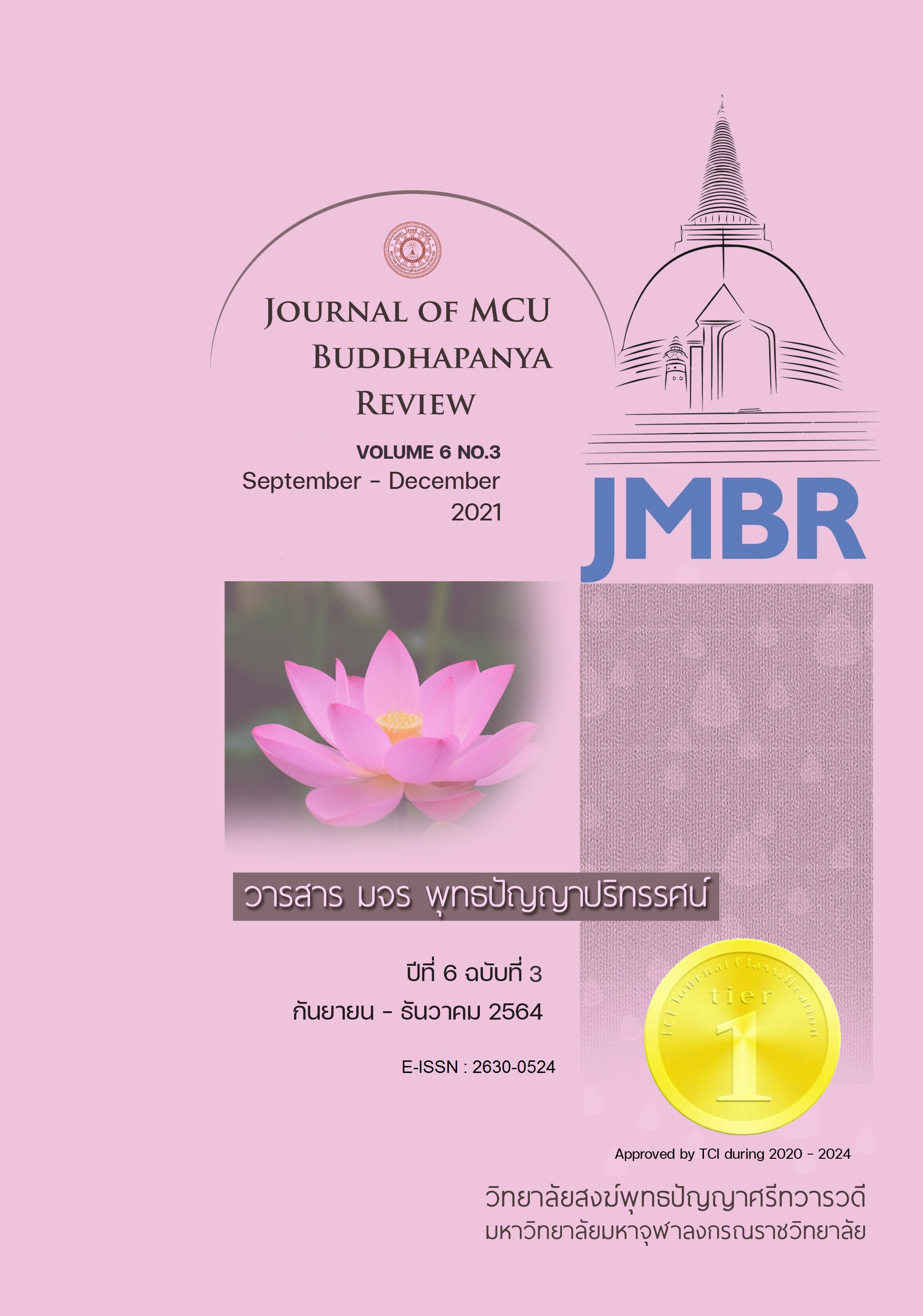Ducation, quality of life, work and culture in educational institutionsthat affect the School personnel expanding educational opportunities under The Nakhon Sawan Primary Educational Service Area Office 2
Keywords:
quality of work life, culture in school, engagement of school personnelAbstract
This research aims to study 1) school culture level 2) The relationship between the quality of work life and the commitment to the school of the teachers and educational personnel. Teachers and Educational Personnel The sample group used in this research was school administrators and teachers, expanding educational opportunities. Subordinate to the Nakhon Sawan Primary Educational Service Area Office 2, total 260 people. The research tool was a data analysis questionnaire. By analyzing frequency, percentages, mean, standard deviation, Pearson product moment correlation coefficient and multiple regression coefficients. Procedure (stepwise multiple regression analysis)
The results of the research were as follows:
1) The level of quality of working life of teachers and educational personnel, schools expand educational opportunities. Under the Office of Nakhon Sawan Primary Educational Service Area 2, it was found that the overall level was at a high level. The school culture of the school expanded educational opportunities, found that the overall level was at a high level. 2) The relationship between the quality of working life of teachers and educational personnel and their engagement with the school expanded educational opportunities. Under the Office of Nakhon Sawan Primary Educational Service Area 2, it was found that the quality of working life of teachers and educational personnel Have a relationship with the school, expand educational opportunities In general, all variables are at a high level. And the relationship between school culture and school attachment to expand educational opportunities, it was found that school culture variables correlated with school affiliation, expanded educational opportunities. In general, all variables are at a high level. The results of creating a predictive equation arising from the quality of working life of teachers and educational personnel, and the school culture and culture that affect the school's affiliations, expand educational opportunities, found that the school's affiliations expand educational opportunities. It was statistically significant that .01 could explain the variation in school engagement, expanding educational opportunities 99.9% (R2 = .999).
References
Jaruwan Hora (1998). Quality of working life and engagement with the organization of the institute lecturers. Rajamangala Technology Study a specific case for Nonthaburi campus And campus cultivating technicians Master of Science Thesis, Kasetsart University.
ณัฎฐพันธ์ เขจรนันทน์. (2551). พฤติกรรมองค์การ (Organizational Behaviors). กรุงเทพฯ: ซีเอ็ดยูเคชั่น.
Natthaphan Khajornnan. (2008). Organization Behavior (Organizational Behaviors). Bangkok: SE-EDUCATION.
ปรีชา วงษาบุตร. (2553). คุณภาพชีวิตการทำงานกับความผูกพันต่อองค์การของพนักงานบริษัท คาร์เปทอินเตอร์แนชั่นแนล ไทยแลนด์ จำกัด (มหาชน). การศึกษาค้นคว้าอิสระ บธ.ม. (บริหารธุรกิจ). กรุงเทพฯ : บัณฑิตวิทยาลัย มหาวิทยาลัยเกษตรศาสตร์.
Preecha Wongsabutr. (2010). Quality of working life and organizational commitment of the employees. Carpet International Thailand Public Company Limited. Independent Study, M.B.A. (Business Administration). Bangkok: Graduate School Kasetsart University.
ปวีณา กรุงพลี. (2552). ความสัมพันธ์ระหว่างคุณภาพชีวิตการทำงานกับความผูกพันต่อองค์กรของ เจ้าหน้าที่สำนักกษาปณ์. วิทยานิพนธ์ บธ.ม. (บริหารธุรกิจ). ปทุมธานี: บัณฑิตวิทยาลัย มหาวิทยาลัยราชภัฎวไลยอลงกรณ์ในพระบรมราชูปถัมภ์.
Pavena Krung Pli. (2009). Relationship between quality of work life and commitment to the organization of Royal Mint Staff Master's Thesis (Business Administration). Pathum Thani: Graduate School Valaya Alongkorn Rajabhat University Under Royal Patronage.
พิสิฏฐ วงศ์นากนากร. (2549). คุณภาพชีวิตในการทำงานกับความผูกพันต่อองค์การ ของพนักงานธนาคารนครหลวงไทย จำกัด [มหาชน] : ศึกษาเฉพาะกรณี สาขาในสังกัดสำนักงานเขต 1 /. มหาวิทยาลัยรามคำแหง,:ม.ป.ท.
Phisitthawong Nakanakorn. (2006). Quality of life in work and commitment to the organization. Of employees of Siam City Bank Public Company Limited: a case study Branches under the Office of District 1 / Ramkhamhaeng University,: PSU.
ลัดดา ดวงรัตน์ (2552). ผลกระทบของวัฒนธรรมองค์กรและคุณภาพชีวิตในการทำงานที่มีผลต่อ ความผูกพันในองค์กรของผู้สอบบัญชีสหกรณ์ในสำนักงานตรวจบัญชีสหกรณ์.วิทยานิพนธ์ บช.ม. (การบัญชี). มหาสารคาม : บัณฑิตวิทยาลัย มหาวิทยาลัยมหาสารคาม.
Ladda Duangrat (2009). Effects of organizational culture and quality of work life on the Organizational commitment of cooperative auditors in the Cooperative Auditing Office. Thesis, M.Sc. (Accounting). Mahasarakham: Graduate School Mahasarakham University.
สุดารัตน์ ครุฑสึก. (2557). ปัจจัยคุณภาพชีวิตในการทำงานของพนักงานความผูกพันต่อองค์กร และการสื่อสารในองค์กรส่งผลต่อการเป็นสมาชิกที่ดีต่อองค์กรของพนักงานเอกชนใน เขตกรุงเทพมหานคร. การศึกษาค้นคว้าอิสระ บธ.ม.(บริหารธุรกิจ). กรุงเทพฯ : บัณฑิตวิทยาลัย มหาวิทยาลัยกรุงเทพ.
Sudarat Khrutasud. (2014). Factors of quality of life in the work of employees, engagement with the organization. And organizational communication affect the corporate membership of the private sector in Bangkok Independent study M.B.A. (Business Administration). Bangkok: Graduate School Bangkok University.
สุพจน์ นาคสวัสดิ์. (2559). การสำรวจความผูกพันในการทำงานของพนักงาน (Employee Engagement Survey). กรุงเทพฯ : เอช อาร์ เซ็นเตอร์.
Suphot Naksawat. (2016). Employee Engagement Survey. Bangkok: HR Center.
อมรรัตน์ อ่อนนุช. (2546). คุณภาพการทำงานกับความผูกพันต่อองค์การของพนักงานระดับปฏิบัติการ กรณีศึกษาโรงงานอุตสาหกรรมแห่งหนึ่ง. วิทยานิพนธ์ศิลปะศาสตร์มหาบัณฑิต สาขาจิตวิทยาอุตสาหกรรมและองค์การ, คณะศิลปะศาสตร์ มหาวิทยาลัยธรรมศาสตร์.
Amonrat On Nut. (2003). Quality of work and organizational commitment of operational employees. A case study of an industrial factory Master of Arts Thesis Industrial and Organizational Psychology, Faculty of Arts Thammasat University.
Buchanan, B. (December 1974). “Building Organizational Commitment: The Socialization of Managers in Work Organization,” Administrative Science Quarterly. 19 (4): 533 - 546.
Danna, K., & Griffin, R. W. (1999). Health and well-being in the workplace: A review and synthesis of the literature. Journal of Management, 25(3), pp. 357 - 384.
Daud. (2010). Investigating the Relationship between Quality of Work Life and Organizational Commitment amongst Employees in Malaysian Firms. Vol 5, No 10 (2010)
Gnanayudam, J., & Dharmasiri, A. (2007). The influence of quality of work-life on organizational commitment: A study of the apparel industry. Sri Lankan Journal of Management, 12(3, 4), 117–140.
Hanson, E.M. (1991). Educational Administration and Organizational Behavior. Boston, MA: Allyn and Bacon.
Hoy, W. K., & Miskel, C. G. (2008). Educational Administration: Theory, Research, and Practice. New York: McGraw-Hill.
Robbins, S. P. and Coulter, M. (2008). การจัดการและพฤติกรรมองค์การ แปลจากเรื่อง Management โดย วิรัช สงวนวงศ์วาน พิมพ์ครั้งที่ 8. กรุงเทพมหานคร: เพียร์สัน เอ็ดดูเคชั่น อินโดไชน่า.
Sergiovanni, T.J. and Strarratt, R.J. (1988). Supervision Human Perspectives. 4 th ed. New York: McGraw Hill.
Sirgy, M.J. and et al. (September 2001). “A New Measure of Quality of Work Life (QWL) Based on Need Satisfaction and Spillover Theory,” Social Indicators Research. 55 (2): 241-302.


